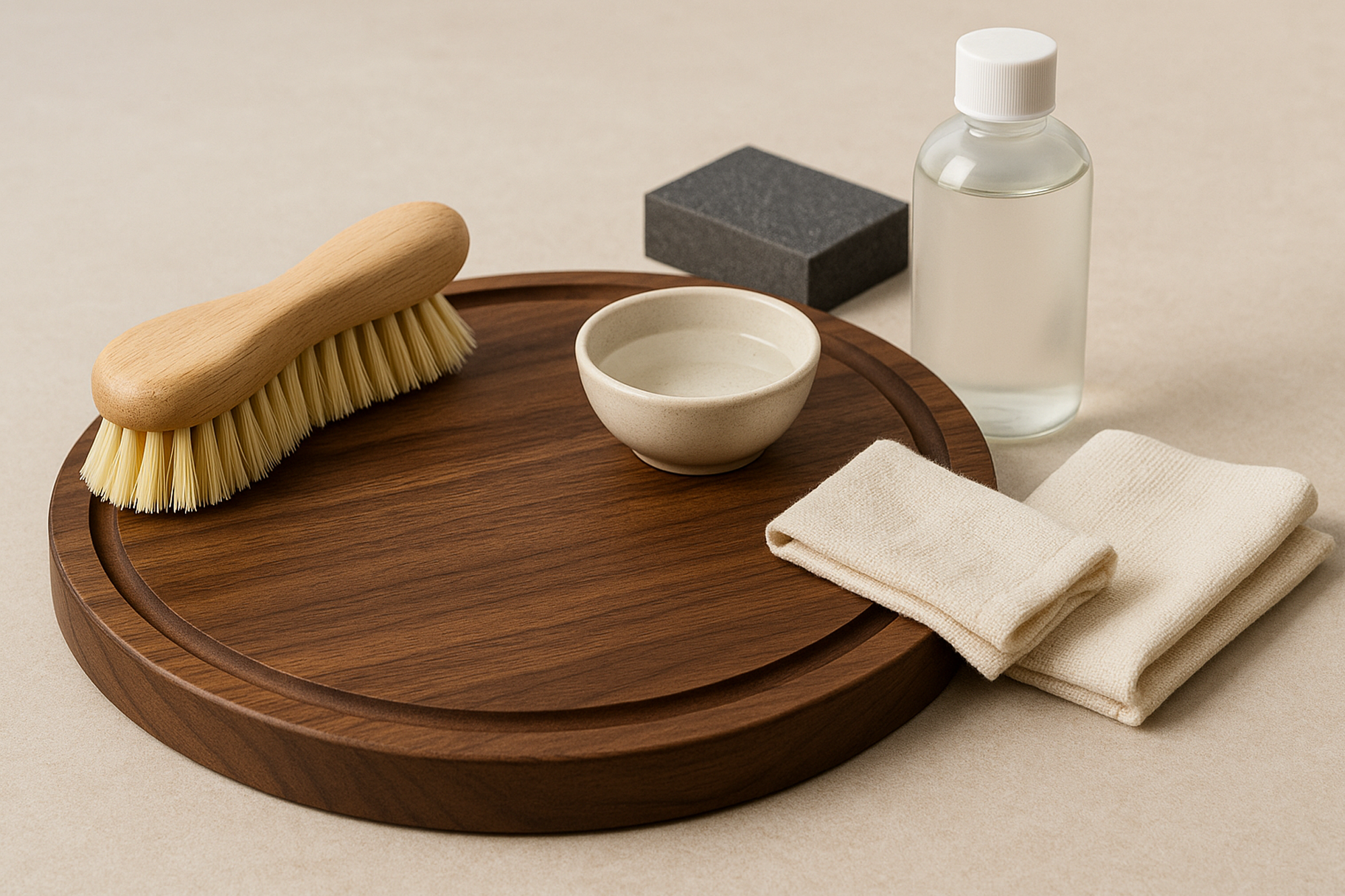
Myth #1: “Hot water alone disinfects a wooden cutting board.”
Rinsing your board under hot water may remove surface debris, but it won’t fully eliminate bacteria — especially after cutting raw meat, poultry, or fish.
Reality: Hot water is only the first step. A cutting board must be washed with hot, soapy water and scrubbed to break down fats and proteins that trap bacteria inside the grain.
Myth #2: “Bleach is the best way to sanitize a wood board.”
Bleach can sanitize plastic boards, but it is too harsh for hardwood. It can weaken wood fibers, strip natural oils, and cause cracking over time.
Reality: A safer alternative is white vinegar or diluted hydrogen peroxide. Both kill bacteria effectively without damaging the wood.
Myth #3: “You can safely clean a wood cutting board in the dishwasher.”
High heat, steam, and long exposure to water will warp, crack, and permanently damage hardwood boards.
Reality: A dishwasher is the fastest way to ruin a board. Hand washing is the only recommended method for wood.
Myth #4: “Lemon and salt fully disinfect a board.”
Lemon and coarse salt are excellent for deodorizing and lifting stains — but they don’t fully sanitize the surface.
Reality: Use lemon + salt for cleaning and brightening, then follow with a real disinfectant such as 3% hydrogen peroxide or white vinegar.
Myth #5: “Once a board is oiled, it’s waterproof and bacteria-proof.”
Oiling protects the wood from absorbing moisture, but it does not disinfect the surface or prevent bacterial growth.
Reality: Mineral oil or board cream is a maintenance step, not a cleaning step. You still need soap, scrubbing, and proper drying.
What the CDC Recommends
“Use separate cutting boards for raw meat and produce. Wash boards with hot, soapy water after each use. Replace boards that become excessively worn or develop hard-to-clean grooves.”
Source: CDC Food Safety Guidelines
How to Properly Clean a Wooden Cutting Board
Step 1: Scrub with hot, soapy water immediately after use.
Step 2: Sanitize with white vinegar or 3% hydrogen peroxide.
Step 3: Dry upright or on edge — never lay flat while wet.
Step 4: Oil every 2–4 weeks with food-safe mineral oil.
Avoid These Common Mistakes
• Never soak a wooden board in water.
• Avoid dishwashers, microwaves, or heat drying.
• Don’t use vegetable oils (they go rancid).
• Don’t leave boards stacked while damp.
When to Replace a Board
• Deep cracks or raised grain
• Visible mold or lingering odor
• Knife grooves that trap food and can’t be cleaned
Final Thoughts
Wooden cutting boards are incredibly durable and naturally resistant to bacteria — when cleaned the right way. A simple routine of scrubbing, sanitizing, drying, and occasional oiling is all it takes to keep your board safe for years.
Looking for a premium hardwood board that’s built to last?
Explore our maple, cherry, and walnut collections — trusted by home cooks, chefs, and engravers across North America.